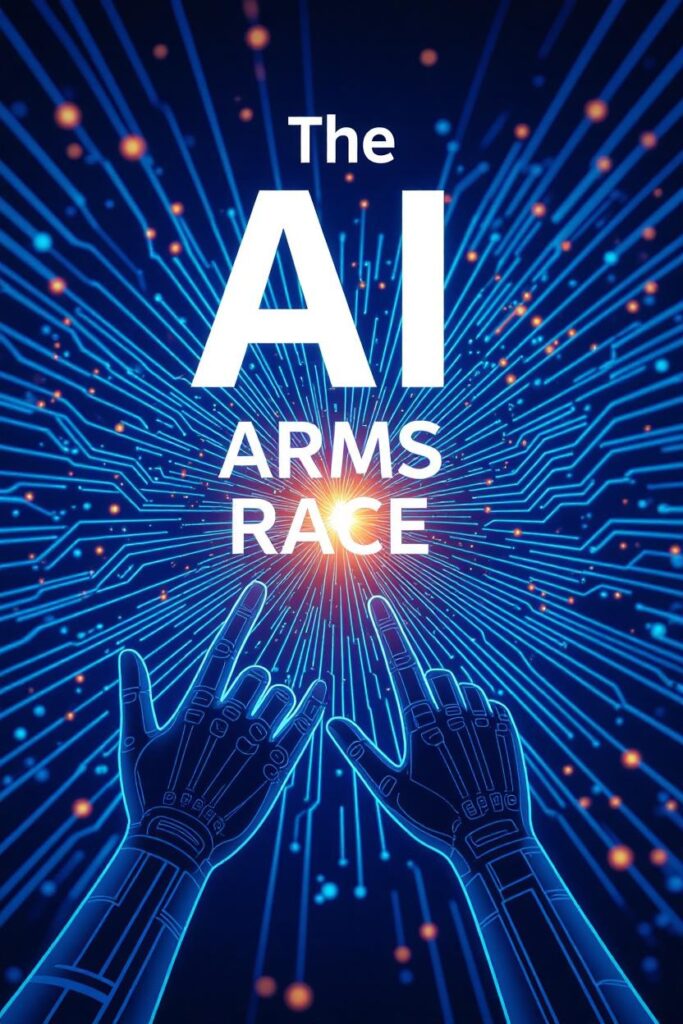The cybersecurity world finds itself at a critical crossroads, where artificial intelligence has emerged as both shield and sword in the escalating digital warfare between defenders and attackers. At this year’s Black Hat conference in Las Vegas, industry veterans painted a nuanced picture of AI’s current role in cybersecurity—one that reveals both unprecedented opportunities and looming uncertainties that could reshape the entire landscape of digital defense.
Mikko Hyppönen, the veteran Finnish cybersecurity researcher who recently concluded his tenure as chief research officer at WithSecure, delivered a sobering assessment to the packed auditorium. After three decades of battling digital threats, from the early days of computer viruses to today’s sophisticated nation-state attacks, Hyppönen offered a perspective that many found both reassuring and deeply concerning. His central thesis was deceptively simple: for now, the good guys are winning the AI arms race, but this advantage may be fleeting.
The statistics Hyppönen presented were striking. Throughout 2024, AI systems failed to discover a single zero-day vulnerability—at least, none that came to his attention. However, the tide began to turn dramatically in 2025, with researchers identifying approximately two dozen previously unknown security flaws through large language model scanning techniques. Each of these vulnerabilities was promptly patched, but the implications extended far beyond the immediate fixes. The same AI capabilities being harnessed by security researchers are increasingly accessible to malicious actors, creating a technological arms race where the stakes couldn’t be higher.
This optimistic assessment faced immediate challenge from Nicole Perlroth, the former New York Times security correspondent who has documented some of the most significant cyber incidents of the past decade. Speaking at a subsequent keynote, Perlroth argued that early indicators suggest offensive capabilities will soon outpace defensive measures. Her prediction carries particular weight given her extensive reporting on state-sponsored hacking groups and cybercriminal enterprises that have demonstrated remarkable adaptability to new technologies.
The debate between these two cybersecurity luminaries reflects a broader uncertainty permeating the industry. Unlike previous technological shifts, AI’s impact on cybersecurity appears to be simultaneously empowering both sides of the conflict, creating what experts describe as a delicate balance that could tip in either direction.
The Reality on the Ground
Penetration testers and red team specialists—the professionals who simulate attacks to identify weaknesses—offer perhaps the most practical perspective on AI’s current capabilities. Their experiences reveal both the promise and limitations of artificial intelligence in security applications. Charles Henderson from Coalfire articulated what many practitioners have discovered: AI tools can handle approximately 60 percent of routine security tasks when properly directed, making them valuable force multipliers rather than replacements for human expertise.
This assessment aligns with observations from Chris Yule at Sophos, who emphasizes that AI systems require clear, limited objectives and continuous human oversight to function effectively. The technology excels at processing vast amounts of data and identifying patterns that might escape human attention, but it stumbles when faced with the contextual nuances and creative problem-solving that characterize real-world security challenges.
The limitations become particularly apparent in complex scenarios where understanding business logic, organizational dynamics, and attacker psychology proves crucial. AI systems can identify technical vulnerabilities with increasing sophistication, but they struggle to assess the human factors that often determine whether a security breach succeeds or fails. This gap between technical capability and practical application explains why no security professional interviewed predicted autonomous AI attacks within the next decade.
The U.S. government’s approach to AI cybersecurity reflects both the technology’s potential and its current constraints. The Defense Advanced Research Projects Agency’s recent AI Cyber Challenge demonstrated remarkable capabilities, with winning teams successfully identifying and patching the majority of vulnerabilities in test datasets. More impressively, the AI systems discovered 18 additional vulnerabilities that hadn’t been intentionally introduced, showcasing the technology’s potential for uncovering hidden security flaws.
However, even these sophisticated systems required careful human guidance and operated within controlled environments that barely approximated the complexity of real-world networks. The $8.5 million investment in the challenge represents both confidence in AI’s defensive potential and recognition that significant development remains necessary.
The Employment Paradox
One of the most contentious aspects of AI’s cybersecurity integration involves its impact on employment. Industry leaders report contradictory trends: while companies have reduced hiring for entry-level security positions, a persistent skills shortage continues plaguing the field. This apparent paradox has sparked debate about whether AI adoption reflects genuine efficiency gains or serves as convenient justification for cost-cutting measures.
The consensus among practitioners suggests that current AI capabilities cannot adequately replace human security professionals, particularly for roles requiring strategic thinking, incident response, or client interaction. Instead, the technology appears most effective when augmenting human capabilities rather than supplanting them entirely. This complementary approach may explain why experienced professionals remain optimistic about AI’s long-term impact on their careers, even as concerns persist about entry-level opportunities.
The cybersecurity industry’s relationship with artificial intelligence reflects broader societal questions about technological progress and human agency. As AI capabilities continue advancing at an unprecedented pace, the security community finds itself in the unique position of simultaneously harnessing and defending against the same technological forces.
The evolution from simple rule-based systems to sophisticated machine learning models has already transformed how organizations approach threat detection and response. However, the next phase promises even more dramatic changes as AI systems become capable of autonomous decision-making and creative problem-solving. Whether this evolution favors defenders or attackers may ultimately depend on factors beyond pure technological capability, including regulatory frameworks, international cooperation, and the cybersecurity community’s ability to adapt to rapidly changing circumstances.
What remains clear is that the integration of AI cybersecurity represents more than a technological upgrade—it signifies a fundamental shift in how societies protect their digital infrastructure. The outcome of this transformation will likely determine not only the security of individual organizations but the stability of the interconnected global economy that increasingly depends on digital systems.
The conversations at Black Hat 2025 revealed an industry grappling with unprecedented challenges and opportunities. As Mikko Hyppönen transitions from cybersecurity research to defense contracting, his departure symbolizes the broader evolution of a field that continues adapting to technological change. The artificial intelligence security landscape he leaves behind bears little resemblance to the virus-fighting environment where he began his career, yet the fundamental mission remains unchanged: protecting digital assets from those who would exploit them.
The future of this digital arms race remains unwritten, with both defensive and offensive capabilities evolving at breakneck speed. What seems certain is that success will require more than just technological sophistication—it will demand the continued collaboration between human insight and artificial intelligence that has characterized the cybersecurity field’s most significant achievements.


